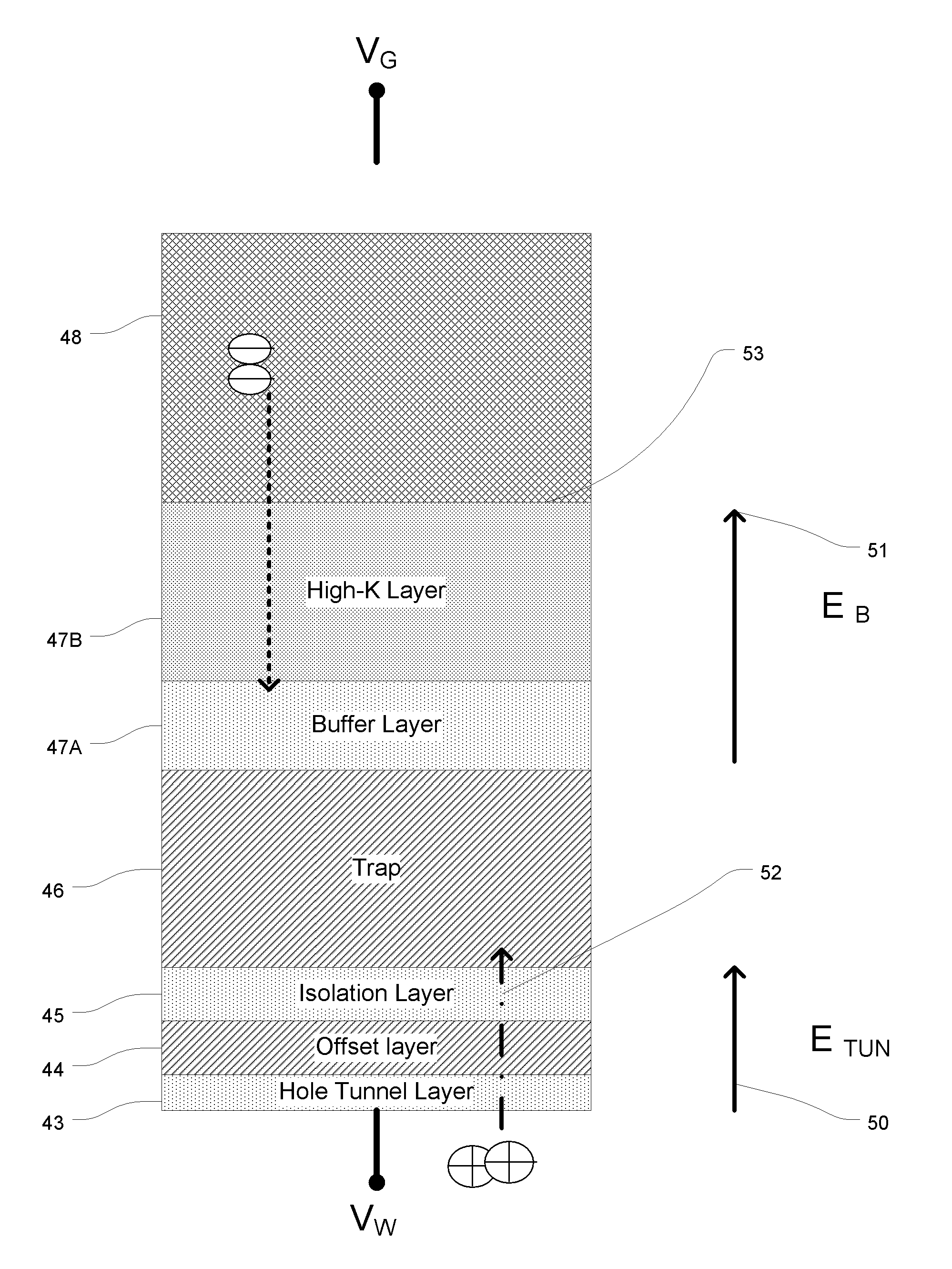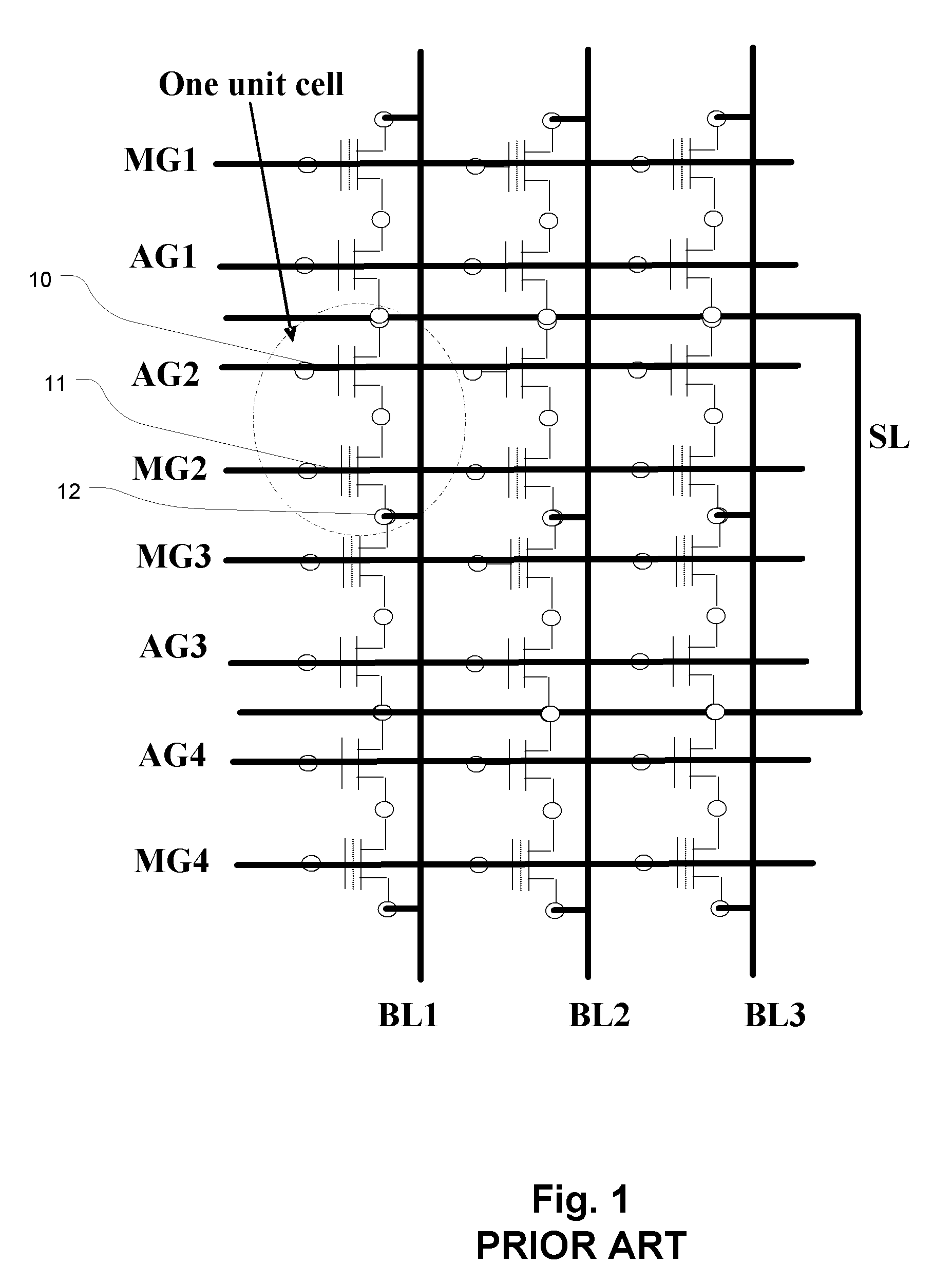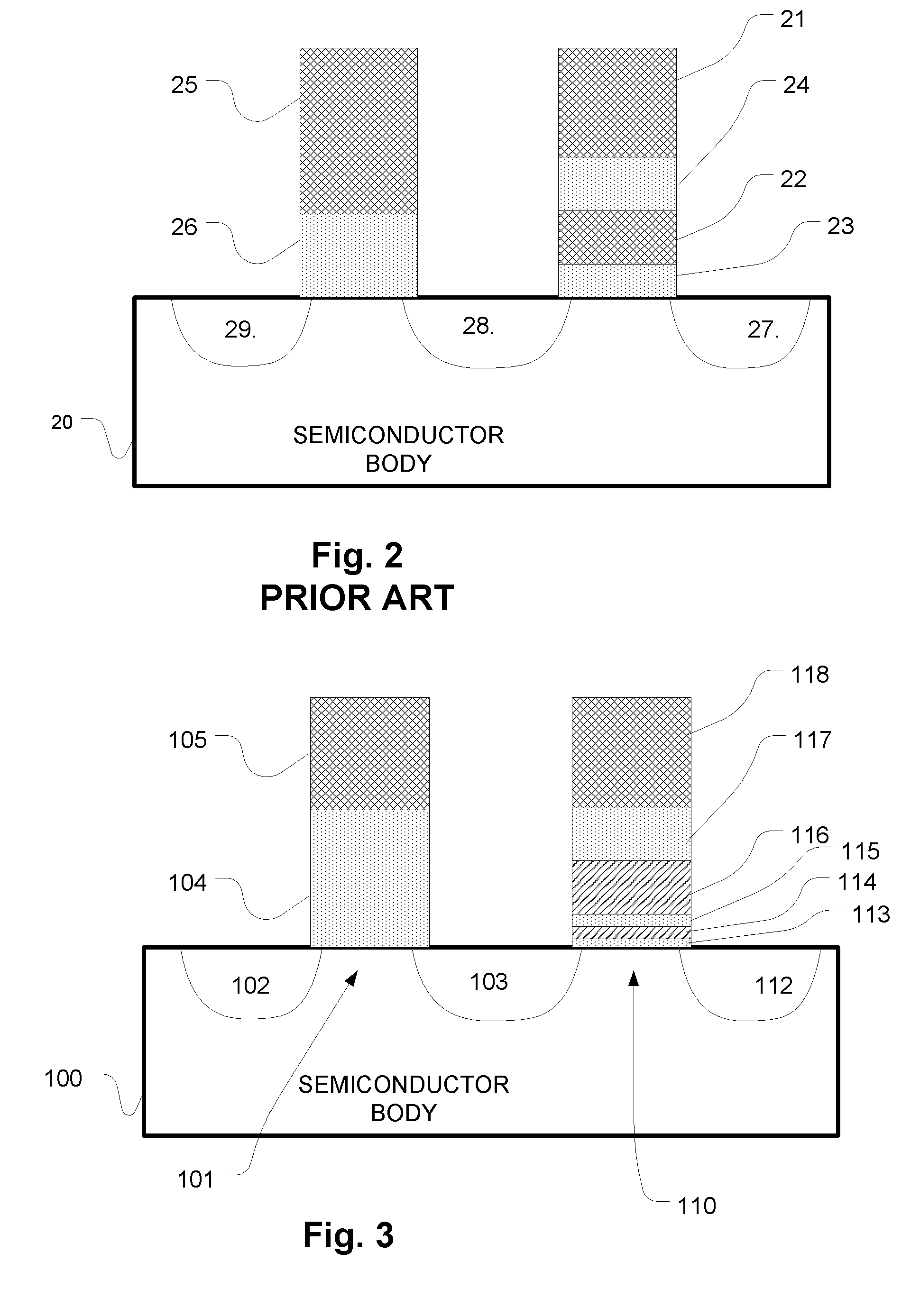Bandgap engineered charge trapping memory in two-transistor nor architecture
a technology of charge trapping memory and bandgap, which is applied in the field of flash memory technology, can solve the problems of limiting the ability to increase the density of flash memory, affecting the performance of flash memory, so as to reduce power consumption and improve performance. the effect of programming
- Summary
- Abstract
- Description
- Claims
- Application Information
AI Technical Summary
Benefits of technology
Problems solved by technology
Method used
Image
Examples
Embodiment Construction
[0059]A detailed description of embodiments of the present invention is provided with reference to the FIGS. 3-45.
[0060]FIG. 3 is a simplified diagram of a 2T cell including charge trapping memory transistors employing a bandgap engineered dielectric tunneling layer. The memory cell is formed on a semiconductor body 100, and includes an access transistor and memory transistor. The access transistor includes a channel 101, a source 102 and a drain in terminal 103. A gate dielectric layer 104 overlies the channel 101, and a gate 105 overlies the gate dielectric 104. The memory transistor includes a channel 110, a source in terminal 103 and a drain 112 adjacent the channel. A gate 118 overlies a multilayer stack of dielectric materials acting as the charge storage structure, including a blocking dielectric layer, a charge trapping layer and a tunneling layer. In this example, the charge trapping layer is in contact with the tunneling layer, but can be otherwise disposed between the tun...
PUM
 Login to View More
Login to View More Abstract
Description
Claims
Application Information
 Login to View More
Login to View More - R&D
- Intellectual Property
- Life Sciences
- Materials
- Tech Scout
- Unparalleled Data Quality
- Higher Quality Content
- 60% Fewer Hallucinations
Browse by: Latest US Patents, China's latest patents, Technical Efficacy Thesaurus, Application Domain, Technology Topic, Popular Technical Reports.
© 2025 PatSnap. All rights reserved.Legal|Privacy policy|Modern Slavery Act Transparency Statement|Sitemap|About US| Contact US: help@patsnap.com



